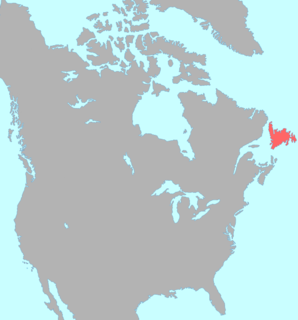 W
WThe Beothuk were a group of indigenous people who lived on the island of Newfoundland.
 W
WThe Bo were one of the ten indigenous tribes of the Great Andamanese people, originally living on the western coast of North Andaman Island in the Indian Ocean.
 W
WThe Gadubanud (Katubanut) also known as the Pallidurgbarran, Yarro waetch or Cape Otway tribe (Tindale), are an Aboriginal Australian people of the state of Victoria. Their territory encompasses the rainforest plateau and rugged coastline of Cape Otway. They were thought to have become extinct quickly following the onset of white colonisation, and little is known of them. However some may have found refuge at the Wesleyan mission station at Birregurra and later the Framlingham mission station, and some people still trace their descent from such a remnant.
 W
WThe Goitacá were an indigenous people of Brazil. They are now extinct.
 W
WThe Guanches were the indigenous inhabitants of Tenerife, the largest of the Canary Islands in the Atlantic Ocean some 100 kilometers west of Africa. and perhaps at one point, Pico Island of the Azores.
 W
WJaegaseung were descendants of Jurchen people who lived in North-Eastern Korea. They formed villages of married lay monks. They produced oatmeal paper and paid their taxes with it. In 1960s, they were forcibly assimilated into the Korean People by the orders of Kim il-Sung.
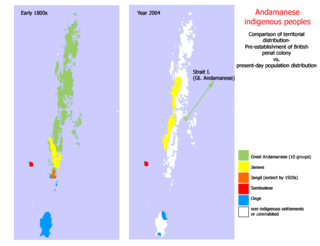 W
WThe Jangil were one of the Andamanese indigenous peoples of the Andaman Islands, located in the Bay of Bengal. They were distributed through the interior of Rutland Island, and were given the name Rutland Jarawa because it was supposed that they were related to the neighboring Jarawas people. Since they were first encountered and documented in the mid-19th century, direct contacts with them remained scarce and they generally sought to avoid such encounters. There are only a few reported instances where outsiders encountered individuals from the group, the last such case being in 1907. Expeditions sent to the interior of the island in the 1920s failed to find any signs of current habitation; their disappearance and extinction were most likely the result of introduced diseases to which they had no natural immunity.
 W
WThe Lache were an indigenous, agrarian people in the highlands of what is now central Colombia's northern Boyacá and Santander departments, primarily in Gutiérrez Province and García Rovira Province. They were part of the Cocuy Confederation and spoke Chibcha, trading predominantly with other Chibcha speakers, such as the Muisca, Guane, Pijao and Chitarero. Trade included salt and textiles, as well as food stuffs. The Lache farmed maize, potatoes, quinoa and cotton, among other crops.
 W
WThis is a list of extinct indigenous peoples of Russia. The list does not include ancient or classical historical tribes in the period of 4000 BC to 500 AD. The list includes tribes of Russia from 500 AD to 1519 AD, also including endangered groups for comparison that are nearing extinction, facing an extinction vortex.
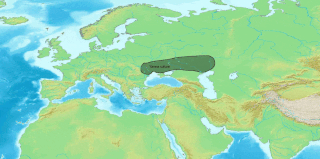 W
WThis is a list of the peoples that are called “Tocharians” also known by the name Agnean-Kuchean, a now extinct Indo-European group of peoples that were speakers of a distinct Indo-European branch of languages. They inhabited the Tarim Basin in today's Xinjiang Chinese Province, in western China. At the end of the first Millennium AD they were assimilated by the Turkic Uyghur people and lost their distinct ethnic identity.
 W
WThe Mexica, or Mexicas, were a Nahuatl-speaking indigenous people of the Valley of Mexico who were the rulers of the Aztec Empire. They were the last Nahua-speaking immigrants to enter the Basin of Mexico after the decline of the Toltecs. The group was also known as the Culhua-Mexica in recognition of its kinship alliance with the neighboring Culhua, descendants of the revered Toltecs, who occupied the Toltec capital of Tula from the 10th to the 12th centuries. The Mexica of Tenochtitlan were additionally referred to as the "Tenochca," a term associated with the name of their altepetl (city-state), Tenochtitlan, and Tenochtitlan's founding leader, Tenoch. The Mexica established Mexico Tenochtitlan, a settlement on an island in Lake Texcoco. A dissident group in Mexico-Tenochtitlan separated and founded the settlement of Mexico-Tlatelolco with its own dynastic lineage. The Mexica of Tlatelolco were also known as Tlatelolca.
 W
WThere was a Jewish presence in Oman for many centuries, however, the Jewish community of the country is no longer in existence.
 W
WThe Picts were a group of peoples who lived in what is now northern and eastern Scotland during Late Antiquity and the Early Middle Ages. Where they lived and what their culture was like can be inferred from early medieval texts and Pictish stones. Their Latin name, Picti, appears in written records from the 3rd to the 10th century. Early medieval sources report the existence of a distinct Pictish language, which today is believed to have been an Insular Celtic language, closely related to the Brittonic spoken by the Britons who lived to the south.
 W
WThe purí tribe lived along the northern coast of South America and in Brazil. They are now extinct but have mixed with people of Paraiba do Sul, though last original groups were last found in the lowlands of the Mato Grosso.
 W
WThe Qauqaut were a Taiwanese aboriginal people who lived primarily in the town of Su-ao in Yilan County. They spoke the Basay language, which is a Kavalanic language. According to Japanese anthropologist Inō Kanori, the Qauqaut people had been assimilated by the Kavalan people by early 20th century. The Qauqaut people are not recognised by the government of Taiwan.
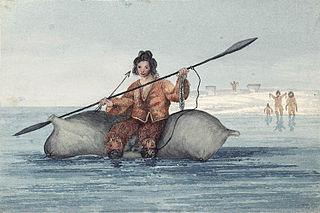 W
WThe Sadlermiut were an Inuit group living in near isolation mainly on and around Coats Island, Walrus Island, and Southampton Island in Hudson Bay. They survived into the early 20th century and were thought by some to have been the last remnants of the Dorset culture as they had preserved a culture and dialect distinct from the mainland Inuit. Despite their culture and local traditions seeming to show combined elements of both the Dorset and Thule societies, genetic studies show no Dorset admixture and prove a sole Inuit ancestry leading many to conclude the cultural difference may be entirely due to their isolation from the mainland Inuit. Research published in 2015 found that the Sadlermiut were genetically Thule who had somehow acquired Dorset cultural features, such as stone technology. It remains a mystery how they acquired Dorset technology in the absence of obvious genetic admixture such as through intermarrying.
 W
WThe Taíno were an indigenous people of the Caribbean. At the time of European contact in the late fifteenth century, they were the principal inhabitants of most of what is now Cuba, Hispaniola, Jamaica, Puerto Rico, the Bahamas, and the northern Lesser Antilles. The Taíno were the first New World peoples encountered by Christopher Columbus during his 1492 voyage. They spoke the Taíno language, a division of the Arawakan language group. Many Puerto Ricans, Cubans and Dominicans have Taíno mtDNA, showing they are descendants through the direct female lines.
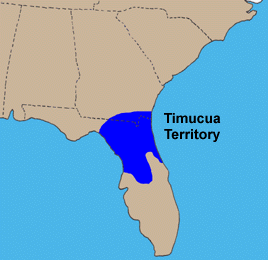 W
WThe Timucua were a Native American people who lived in Northeast and North Central Florida and southeast Georgia. They were the largest indigenous group in that area and consisted of about 35 chiefdoms, many leading thousands of people. The various groups of Timucua spoke several dialects of the Timucua language. At the time of European contact, Timucuan speakers occupied about 19,200 square miles (50,000 km2) in the present-day states of Florida and Georgia, with an estimated population of 200,000. Milanich notes that the population density calculated from those figures, 10.4 per square mile (4.0/km2) is close to the population densities calculated by other authors for the Bahamas and for Hispaniola at the time of first European contact. The territory occupied by Timucua speakers stretched from the Altamaha River and Cumberland Island in present-day Georgia as far south as Lake George in central Florida, and from the Atlantic Ocean west to the Aucilla River in the Florida Panhandle, though it reached the Gulf of Mexico at no more than a couple of points.
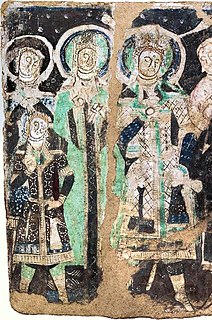 W
WThe Tocharians, or Tokharians, were speakers of Tocharian languages, Indo-European languages known from around 7600 documents from around 400 to 1200 AD, found on the northern edge of the Tarim Basin . The name "Tocharian" was given to these languages in the early 20th century by scholars who identified their speakers with a people known in ancient Greek sources as the Tókharoi, who inhabited Bactria from the 2nd century BC. This identification is generally considered erroneous, but the name "Tocharian" remains the most common term for the languages and their speakers. Their actual ethnic name is unknown, although they may have referred to themselves as Agni, Kuči and Krorän, or Agniya, Kuchiya as known from Sanskrit texts.
 W
WThe Xixime were an indigenous people who inhabited a portion of the Sierra Madre Occidental mountains in the present day states of Durango and Sinaloa, Mexico. The Xixime are noted for their reported practice of cannibalism and resistance to Spanish colonization in the form of the Xixime Rebellion of 1610.